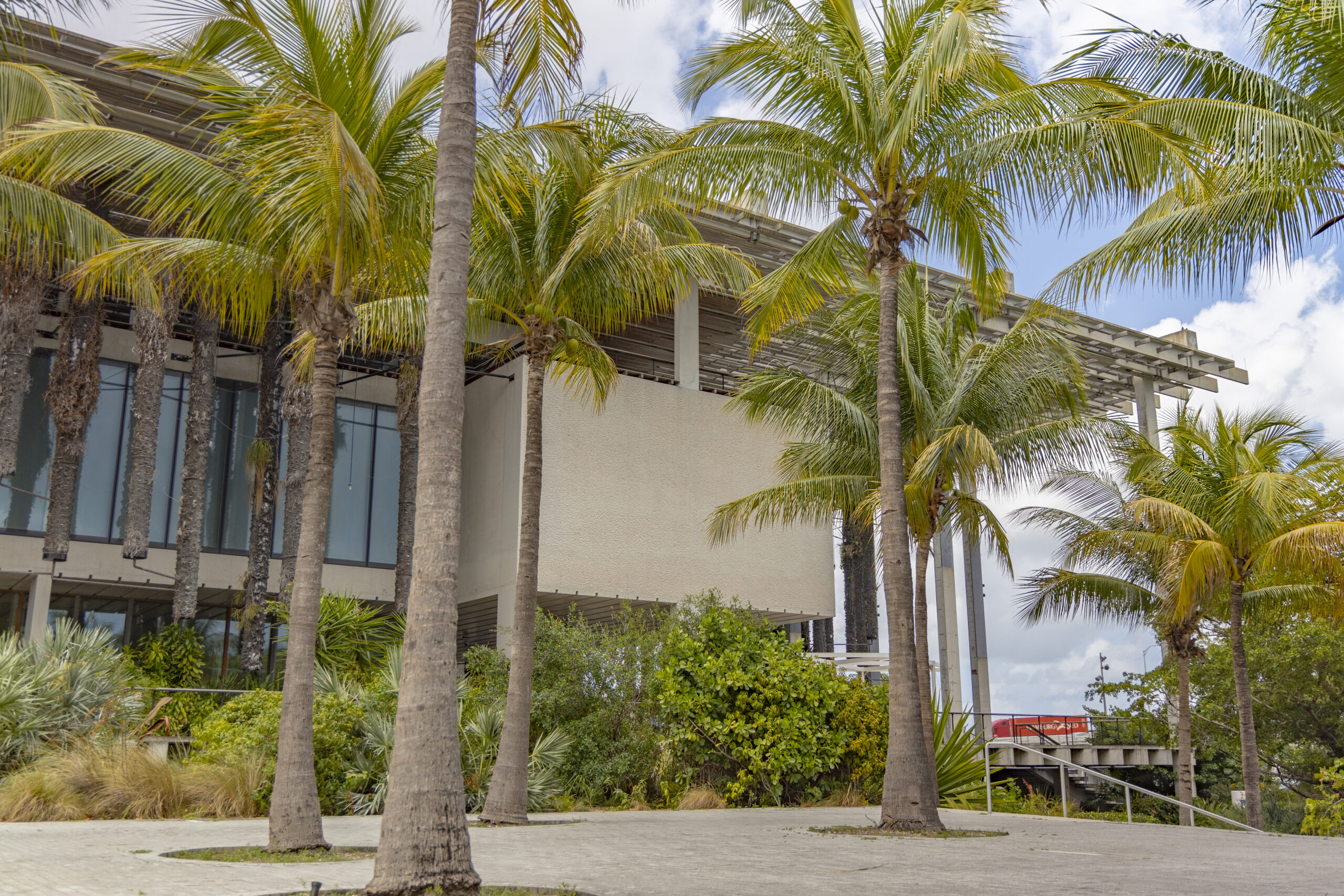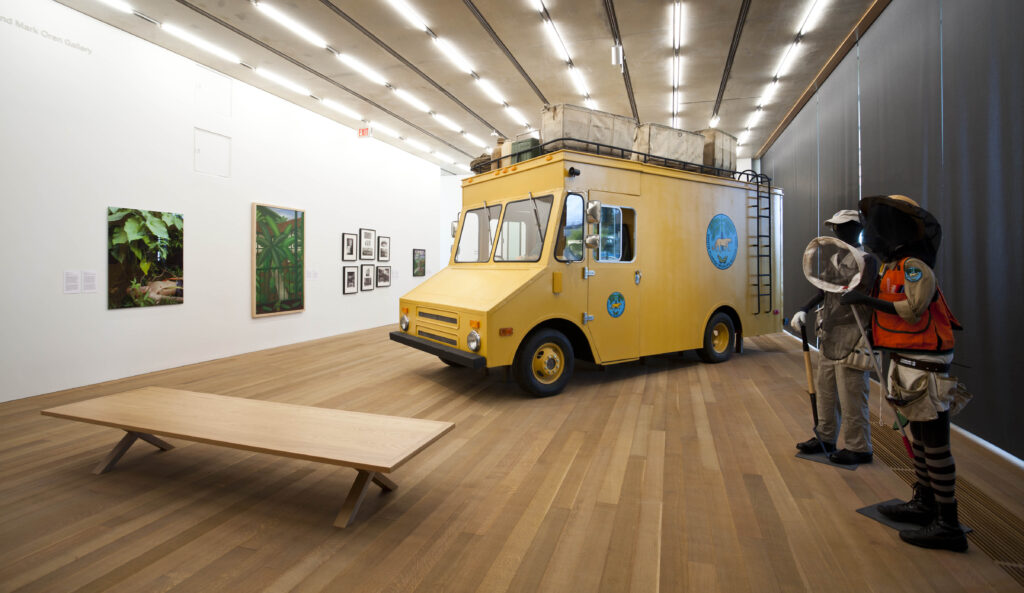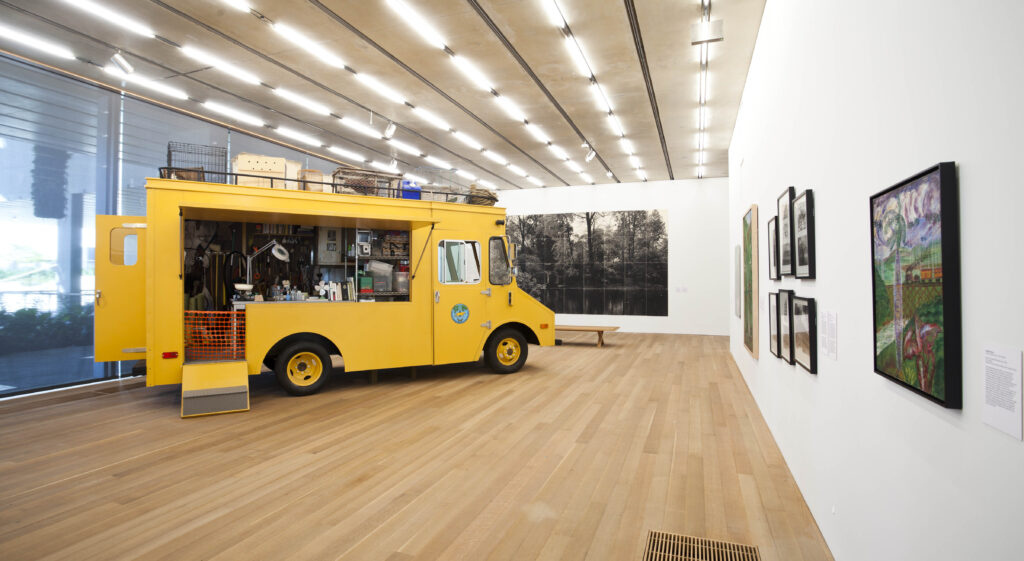Miami, FL
74°F, broken clouds
Pérez Art Museum Miami



- 1/3 1. Introduction
- 2/3 2. The South Florida Wildlife Rescue Unit: Mobile Laboratory
- 3/3 3. Feedback
guide
Mark Dion: The South Florida Wildlife Rescue Unit
guide
Mark Dion: The South Florida Wildlife Rescue Unit
Introduction

Installation view: AMERICANA, Pérez Art Museum Miami, 2013–14. Photo: Oriol Tarridas © Mark Dion. Courtesy the artist and Tanya Bonakdar Gallery, New York / Los Angeles
Mark Dion’s South Florida Wildlife Rescue Unit is a large art installation that combines real and imaginary elements to explore how humans affect the natural world. It was first created in 2006 for the Miami Art Museum, now called Pérez Art Museum Miami (PAMM).
The installation shows a pretend animal rescue team working in the Florida Everglades. Its main feature is a full-size vehicle and rescue equipment created for a made-up group called the South Florida Wildlife Rescue Unit. This team is shown as rushing into nature to protect endangered plants, animals, and ecosystems. The scene includes mannequins dressed like rescue workers, tools used in wildlife care, and a display filled with equipment. Although the rescue team is fictional, the setup looks very real. Dion uses this to poke fun at slow government responses to preservation while also showing respect for local environmental activism.
The artwork is divided into three parts. Each part tells the story of a different time in the Everglades’ history: exploration (late 1700s to mid-1800s), exploitation (mid-1800s to early 20th century), and preservation and restoration (mid-20th century to today). These sections show how people’s attitudes toward the Everglades have changed—from exploring and damaging it to working to protect and restore it.
Mark Dion is a conceptual artist. This means he focuses more on ideas than just on the final artwork. His projects often combine art, science, history, ecology, and archaeology. He uses methods from science—like field research, digging, and collecting—to build his installations. His artworks often look like museum exhibits or curiosity cabinets. These special cabinets, called Wunderkammern, were popular in the 1500s and 1600s and were used to display rare and unusual items.
Over the years, Dion has worked with many museums, zoos, aquariums, and science centers. By copying their styles, he encourages people to think about how facts are presented and who decides what counts as knowledge. His art shows how science, culture, and politics are often connected. Dion wants viewers to reflect on how our surroundings—and the systems we are part of—shape what we believe and value.
Dion is also interested in the idea of collecting. He asks questions like: Why do museums keep some objects and not others? What makes something worth saving? He encourages viewers to think about the difference between a “thing” and an “object,” and how both can help us learn about history and identity.
guide
Mark Dion: The South Florida Wildlife Rescue Unit
The South Florida Wildlife Rescue Unit: Mobile Laboratory

Installation view: AMERICANA, Pérez Art Museum Miami, 2013–14. Photo: Oriol Tarridas © Mark Dion. Courtesy the artist and Tanya Bonakdar Gallery, New York / Los Angeles
The South Florida Wildlife Rescue Unit: Mobile Laboratory is a mixed media installation by Mark Dion. Overall, all of its components measure about eighteen feet tall, seven feet wide, and eight feet deep.
This art installation features a bright yellow food truck or mobile vendor vehicle as the central piece. The truck has a boxy, utilitarian design that mimics an authentic wildlife rescue vehicle, with yellow wheels and blue circular emblems or logos on its sides. On top of the truck, there’s a roof rack or storage area with various items including wire baskets and containers, plus a ladder mounted on the back for accessing the roof storage.
The truck’s service window is opened to reveal a remarkably dense and intricate interior workspace designed as a mobile field station. The cramped but efficiently organized space is packed with scientific equipment, field research instruments, specimen containers, and rescue apparatus that create an almost archaeological display of wildlife conservation tools. The interior contains scales for weighing specimens, various bottles and containers for sample collection, scientific implements hanging from hooks, shelves lined with field guides and research materials, and specialized equipment for wildlife rehabilitation and environmental monitoring. Personal touches like photographs on the walls and the general sense of organized chaos suggest the authentic working environment of a field researcher or wildlife rescue operative.
Dion, known for his work intersecting art, natural history, and environmental activism, has created what appears to be a fully functional mobile research unit that could respond to environmental emergencies throughout South Florida’s diverse ecosystems.
guide
Mark Dion: The South Florida Wildlife Rescue Unit
Feedback
We hope you enjoyed this Digital Exhibition Guide!
We appreciate you taking the time to submit feedback to us as we strive to make PAMM as engaging as possible. You may submit your feedback anonymously through this form.
More on Mark Dion: The South Florida Wildlife Rescue Unit



